Linseed, Flax
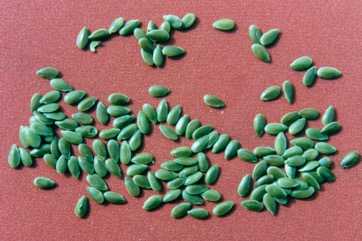
It needs a temperate climate. It can grow in moderately fertile soils. Plants have some drought and frost resistance. It has been grown in mountains in Java. In Argentina it grows from sea level to 1,000 m above sea level.
Also known as:
Agasi, Alivirai, Alsi, Atasi, Avisi, Bi-thwar, Flachs, Hnan-kyat, Javas, Lein, Lin, Lina, Linaza, Linho, Lino, Lino silvestre, Masina, Navadni lan, Paiksan, Tishi, Tisi, Ya ma
Synonyms
- Linum crepitans (Boenn.) Dumort.
- Linum humile Mill.
- Linum usitatissimum subsp. transitorium Vavilov & Elladi
- Linum usitatissimum var. humile (Mill.) Pers.
Edible Portion
- Seeds, Pods, Oil
Where does Linseed grow?
Found in: Africa, Albania, Argentina, Asia, Australia, Bangladesh, Belgium, Brazil, Britain, Bulgaria, Canada, Caucasus, Chile, China, Crete, Cyprus, Dominican Republic, East Africa, Egypt, Eritrea, Estonia, Ethiopia, Europe, Finland, France, Georgia, Greece, Hawaii, Himalayas, Holland, India, Indonesia, Iran, Ireland, Italy, Kenya, Korea, Lithuania, Macedonia, Mediterranean, Mozambique, Myanmar, Nepal, New Zealand, Nigeria, North Africa, North America, Pacific, Pakistan, Poland, Portugal, Prussia, Romania, Russia, Scandinavia, SE Asia, Serbia, Slovenia, Somalia, South America, Spain, Sudan, Syria, Tajikistan, Tanzania, Tasmania, Turkey, Uruguay, United States, West Africa, West Indies, Yugoslavia
Notes: There are about 200 Linum species. It has anticancer properties.
Status: It is a cultivated food crop.
Growing Linseed, Flax
Cultivation: Plants are grown from seed. Plants are generally self pollinated. In Bangladesh it is grown mixed with sesamum or chickpea.
Edible Uses: CAUTION: Some kinds contain high levels of poisonous alkaloids. The seeds are crushed to make linseed oil. This has occasionally been used as a cooking oil. The oil is high in Omega-3. Flax seed has also been used to make tea. Roasted seeds are used as a coffee substitute. The seeds are also eaten. They are used in bread and cereals and can be sprouted. They can be used as an egg substitute in muffins, cakes and scones. The leaves are also eaten as a vegetable with sour cream and lemon.
Production: Plants take 24-27 weeks to mature.
Nutrition Info
per 100g edible portion| Edible Part | Energy (kcal) | Protein (g) | Iron (mg) | Vitamin A (ug) | Vitamin c (mg) | Zinc (mg) | % Water |
|---|---|---|---|---|---|---|---|
| Seeds | 493 | 19.5 | 6.2 | 0 | 1.3 | 4.2 | 8.8 |
Linseed, Flax Photos

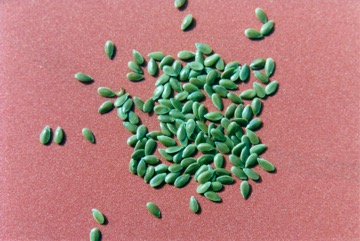
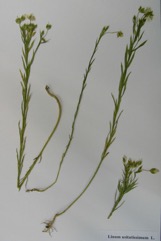
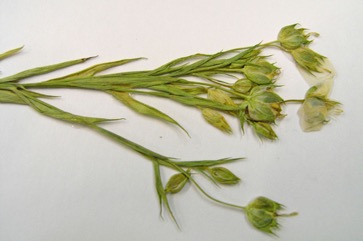
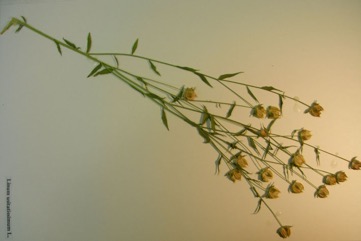
References
Adugna, W., 2007. Linum usitatissimum L. [Internet] Record from Protabase. van der Vossen, H.A.M. & Mkamilo, G.S. (Editors). PROTA (Plant Resources of Tropical Africa), Wageningen, Netherlands. < http://database.prota.org/search.htm>. Accessed 19 October 2009.
Ambasta S.P. (Ed.), 2000, The Useful Plants of India. CSIR India. p 330
Blamey, M and Grey-Wilson, C., 2005, Wild flowers of the Mediterranean. A & C Black London. p 116
Bodkin, F., 1991, Encyclopedia Botanica. Cornstalk publishing, p 642
Bremness, L., 1994, Herbs. Collins Eyewitness Handbooks. Harper Collins. p 255
Burkill, I.H., 1966, A Dictionary of the Economic Products of the Malay Peninsula. Ministry of Agriculture and Cooperatives, Kuala Lumpur, Malaysia. Vol 2 (I-Z) p 1374
Bussman, R. W., et al, 2016, A comparative ethnobotany of Khevsureti, Samtskhe-Javakheti, Tusheti, Svaneti, and Racha-Lechkhumi, Republic of Georgia (Sakartvelo), Caucasus. Journal of Ethnobiology and Ethnomedicine (2016) 12:4
Curtis, W.M., 1956, The Students Flora of Tasmania Vol 1 p 88
Durrant, A., 1979, Flax and linseed, in Simmonds N.W.,(ed), Crop Plant Evolution. Longmans. London. p 190
Esperanca, M. J., 1988. Surviving in the wild. A glance at the wild plants and their uses. Vol. 1. p 366
Facciola, S., 1998, Cornucopia 2: a Source Book of Edible Plants. Kampong Publications, p 145
Flora of Pakistan. www.eFloras.org
Hedrick, U.P., 1919, (Ed.), Sturtevant's edible plants of the world. p 384
Heywood, V.H., Brummitt, R.K., Culham, A., and Seberg, O. 2007, Flowering Plant Families of the World. Royal Botanical Gardens, Kew. p 193
Hibbert, M., 2002, The Aussie Plant Finder 2002, Florilegium. p 185
http://www.botanic-gardens-ljubljana.com/en/plants
Hussey, B.M.J., Keighery, G.J., Cousens, R.D., Dodd, J., Lloyd, S.G., 1997, Western Weeds. A guide to the weeds of Western Australia. Plant Protection Society of Western Australia. p 172
Hu, Shiu-ying, 2005, Food Plants of China. The Chinese University Press. p 490
Jardin, C., 1970, List of Foods Used In Africa, FAO Nutrition Information Document Series No 2.p 44
Kalle, R. & Soukand, R., 2012, Historical ethnobotanical review of wild edible plants of Estonia (1770s-1960s) Acta Societatis Botanicorum Poloniae 81(4):271-281
Kintzios, S. E., 2006, Terrestrial Plant-Derived Anticancer Agents and Plant Species Used in Anticancer research. Critical Reviews in Plant Sciences. 25: pp 79-113
Kiple, K.F. & Ornelas, K.C., (eds), 2000, The Cambridge World History of Food. CUP p 1774
Lamp, C & Collet F., 1989, Field Guide to Weeds in Australia. Inkata Press. p 158
Lazarides, M. & Hince, B., 1993, Handbook of Economic Plants of Australia, CSIRO. p 149
MacKinnon, A., et al, 2009, Edible & Medicinal Plants of Canada. Lone Pine. p 220
Malezas Comestibles del Cono Sur, INTA, 2009, Buernos Aires
Molla, A., Ethiopian Plant Names. http://www.ethiopic.com/aplants.htm
Monica, S. J. and Joseph, M., 2016, Phytochemical screening of flaxseed (Linum usitatissimum L.). International Journal of Scientific Research, vol. 5, issue, 3, pp. 218-219.
Paczkowska, G. & Chapman, A.R., 2000, The Western Australian Flora. A Descriptive Catalogue. Western Australian Herbarium. p 280
Plants for a Future database, The Field, Penpol, Lostwithiel, Cornwall, PL22 0NG, UK. http://www.scs.leeds.ac.uk/pfaf/ Rashid, H. E., 1977, Geography of Bangladesh. Westview. p 285 (As Linum usitassimum)
Sp. pl. 1:277. 1753
Tasmanian Herbarium Vascular Plants list p 37
van Wyk, B., 2005, Food Plants of the World. An illustrated guide. Timber press. p 229
VAN ETTEN et al (1967),
WATT,
World Checklist of Useful Plant Species 2020. Royal Botanic Gardens, Kew